What Is A Fruit?
Posted in Interesting Plant Stories, Uncategorized on August 6, 2014 by Lawrence Kelly
Lawrence M. Kelly, Ph.D., is Director of Graduate Studies at The New York Botanical Garden. His research focuses on the evolution and classification of flowering plants.
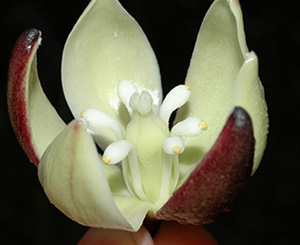
Despite the year-round availability of most produce, few things say summer like a juicy, vine-ripened tomato from the garden or a produce stand. You can slice them, dice them, and use them in stews, sauces, and salads. They’re one of the most versatile of vegetables. Or are they?
Is a tomato a vegetable, as most people think it is, or is it really a fruit? In general terms, fruits are usually sweet and vegetables are savory. Fruits are usually eaten as dessert, and vegetables as a main course. Fruits are often succulent and edible when raw. More technical dictionary definitions recognize a fruit as an edible reproductive body of a plant. In contrast, vegetables are usually defined much more broadly, for example as an edible part of a plant, or they are defined by example, such as in Merriam-Webster’s Dictionary, which cites cabbages, beans, and potatoes.
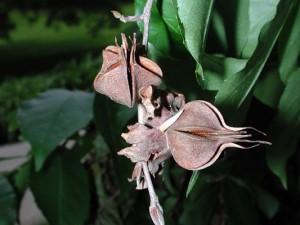
No less than the United States Supreme Court weighed in on this familiar debate in Nix v. Hedden, which established that the tomato should be classified as a vegetable rather than a fruit under U.S. Customs regulations. The Court’s 1893 decision was not meant to reflect the technical botanical meaning of “fruit,” but rather to correspond with commonly used distinctions between fruits and vegetables for the purposes of a tariff on imported produce.
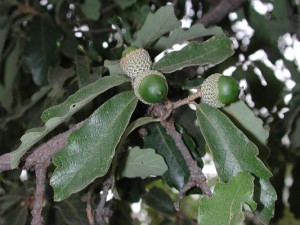
Legal definitions and common use notwithstanding, the botanical definition of “fruit” is very specific. A fruit is a mature, ripened ovary, along with the contents of the ovary. The ovary is the ovule-bearing reproductive structure in the plant flower. The ovary serves to enclose and protect the ovules, from the youngest stages of flower development until the ovules become fertilized and turn into seeds. Eventually, the fruit functions to spread the seeds or to attract dispersers. There are many different kinds of fruit–from dry to fleshy, from dehiscent (splitting open) to indehiscent and from single seed to many-seeded.
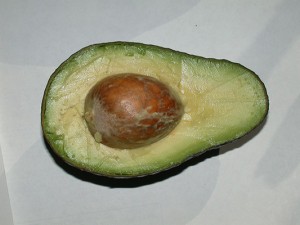
Photograph by Kevin C. Nixon, plantsystematics.org
Under the botanical definition of fruit, many things that are commonly called vegetables are in fact fruits (for example, eggplant, green beans, okra, and, yes, tomatoes). Technically, fruits also include many things that we commonly call nuts (when enclosed by their shells—for example, walnut, sunflower seed, peanut, chestnut, acorn, and even coconut). But that does not include the Brazil nut, which is a seed.
Fruits also include some spices (allspice, vanilla bean, chili pepper, fennel seeds, black pepper, coriander), melons and squash (including cucumber, pumpkin, watermelon), most berries (blueberry, cranberry, gooseberry), and grains (corn, wheat, rice), which mostly consist of seed, but are also made of ovary tissue.
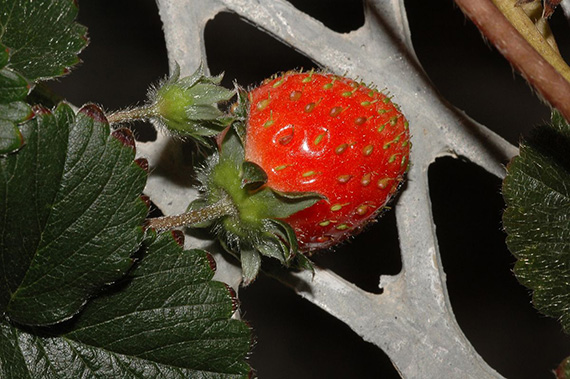
Photograph by Kevin C. Nixon, plantsystematics.org
Botanists have a very diverse and precise terminology for the many different kinds of fruits—berry, capsule, pepo, achene, hesperidium—but there is not a strict botanical definition of vegetable. Vegetables are many kinds of plant products and are derived from many different parts of plants, such as the petiole or leaf stalk (celery, rhubarb), leaf (lettuce, cabbage), vegetative buds (brussels sprout), stems (asparagus, bamboo shoot), rhizomes (ginger), tubers (potato, oca), whole plant seedlings (soybean, mung bean, alfalfa sprouts), roots (carrots, beets), or flower buds (broccoli, cauliflower, capers).
The next time your child leaves green beans on his plate, he might be motivated by the suggestion that he eat his fruit, unless he is intimately familiar with Supreme Court law. In that case, the conversation could get complicated.


A quite enjoyable read. Thank you taking the time to explain.